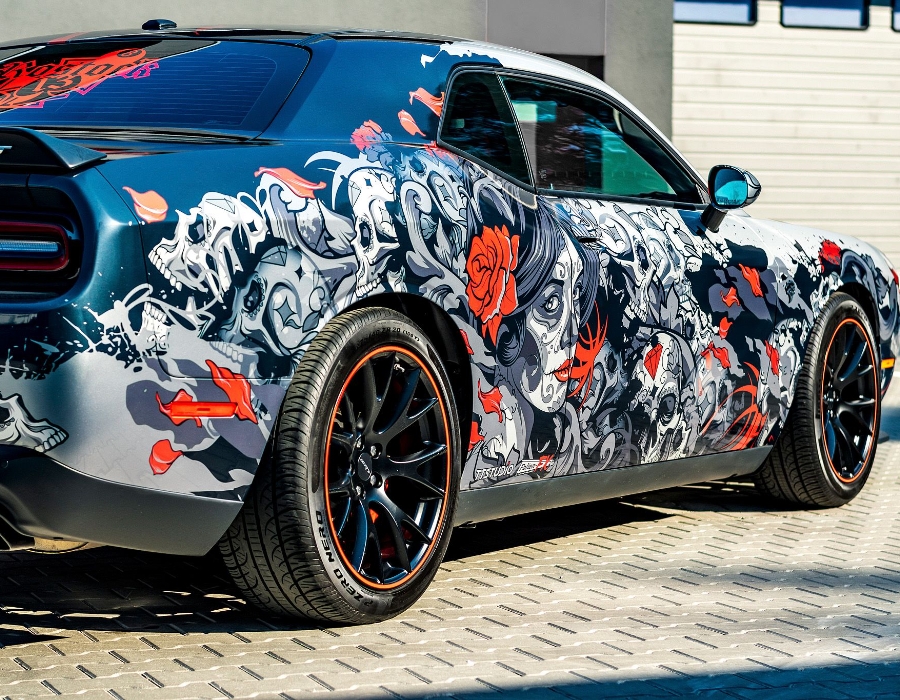A Beginner’s Guide to Car Paint Jobs: What You Need to Know Before Taking the Plunge

Getting a fresh coat of paint on your car is one of the easiest ways to make it look new again. Whether you want to refresh its current color or give it a complete makeover, painting your car can make a huge difference in its appearance and even its resale value. However, before jumping into the process, there are several things you need to know about car painting, from choosing the right paint to deciding if you should do it yourself or hire a professional.
Introduction
In this guide, we'll cover everything you need to know before taking the plunge into a car paint job. You will also learn about how much paint to paint a car.

Understanding Car Paint Types
When it comes to car paint jobs, not all paints are the same. There are various types of automotive paint, each with unique properties and uses. Here are the most common types of paint used on cars:
-
Acrylic Lacquer
This type of paint was more common in the past and is known for its high-gloss finish. It’s easy to apply and gives your car a smooth, shiny look. However, it’s not as durable as modern paints and can fade or crack over time. -
Acrylic Enamel
A longer-lasting option, acrylic enamel dries to a hard finish and is more resistant to chipping and weather damage. It’s a popular choice for those who want a durable finish without too much shine. -
Urethane Paint
Urethane paint is the most durable option and is commonly used by professionals. It offers a high-gloss finish and is resistant to fading, chipping, and weather conditions. While it’s more expensive, it’s worth the investment if you want a long-lasting paint job.
DIY vs. Professional Paint Jobs
Deciding whether to paint your car yourself or hire a professional is a crucial decision. Each option has its pros and cons, and the choice depends on your experience, tools, and budget.
DIY Paint Jobs
Painting your car yourself can save you a significant amount of money. However, it’s important to note that DIY car painting requires the right tools, materials, and a controlled environment to achieve a good result.
Pros:
-
Cost-Effective: You can save hundreds, if not thousands, of dollars by doing it yourself.
-
Flexibility: You can work at your own pace and avoid scheduling conflicts with a professional.
Cons:
-
Experience Needed: Painting a car requires skill and patience. If you’re inexperienced, the result might not meet your expectations.
-
Tools and Materials: You’ll need to invest in a spray gun, sandpaper, primer, clear coat, and paint.
Professional Paint Jobs
Hiring a professional may cost more, but you’ll get high-quality results with less hassle. A professional auto body shop will have the necessary tools, equipment, and expertise to give your car a smooth and even finish.
Pros:
-
Expertise: Professionals know how to handle paint and equipment to ensure a flawless finish.
-
Guaranteed Results: Many shops offer warranties on their work, giving you peace of mind.
Cons:
-
Cost: Professional paint jobs can range from $500 to over $5,000, depending on the quality of the paint and the size of the vehicle.
-
Scheduling: You’ll need to leave your car at the shop for a few days or longer.
Steps Involved in a Car Paint Job
Whether you decide to DIY or hire a pro, it’s important to understand the basic steps involved in painting a car. Knowing the process will help you plan accordingly and appreciate the work that goes into it.
1. Preparation
The first step is preparing the car’s surface. This involves cleaning the car thoroughly, removing any rust or imperfections, and sanding the surface to create a smooth base for the new paint.
2. Priming
After sanding, a primer is applied to help the paint adhere better to the car’s surface. This step is crucial for ensuring that the final paint job looks smooth and lasts a long time.
3. Painting
Once the primer has dried, the actual painting process begins. Multiple thin layers of paint are applied to ensure even coverage. Depending on the type of paint, you may need to wait for each layer to dry before applying the next.
4. Clear Coating
After the paint has been applied, a clear coat is added to protect the paint and give the car a glossy finish. This step is important for ensuring the longevity of the paint job.
5. Polishing
Finally, the car is polished to remove any minor imperfections and give it a smooth, shiny finish.
Factors That Affect Car Paint Job Costs
Before starting your car painting project, it's essential to understand the various factors that influence the cost. Here are some of the key factors:
-
Size of the Car
Larger vehicles require more paint, time, and effort, which increases the cost. Smaller cars, on the other hand, are cheaper to paint. -
Type of Paint
As mentioned earlier, the type of paint you choose will significantly affect the price. Urethane paint, for example, is more expensive than acrylic lacquer. -
Labor Costs
If you hire a professional, the labor cost will vary depending on the shop's location and the experience of the technicians. Labor costs can account for a large portion of the total price. -
Additional Services
If your car has rust or body damage, you may need additional services like rust removal or bodywork, which will add to the overall cost.
Maintenance Tips for a Fresh Paint Job
Once your car is freshly painted, proper maintenance is essential to keep it looking new for as long as possible. Here are a few tips to help you maintain your car’s new paint job:
-
Wash Regularly: Dirt, bird droppings, and tree sap can damage your paint, so it’s essential to wash your car regularly.
-
Use a Car Cover: If possible, use a car cover to protect your vehicle from sun and weather damage.
-
Wax Periodically: Waxing your car adds a protective layer and keeps the paint looking shiny.
-
Avoid Harsh Chemicals: Stick to car-specific cleaning products to avoid damaging the paint.
Conclusion
A new car paint job can transform the look of your vehicle and increase its value. Whether you decide to do it yourself or hire a professional, it's essential to understand the process, the costs involved, and the best ways to maintain the paint afterward. Now that you're equipped with this knowledge, you can confidently move forward with your car painting project.

- Industry
- Art
- Causes
- Crafts
- Dance
- Drinks
- Film
- Fitness
- Food
- Jeux
- Gardening
- Health
- Domicile
- Literature
- Music
- Networking
- Autre
- Party
- Religion
- Shopping
- Sports
- Theater
- Wellness
- News


